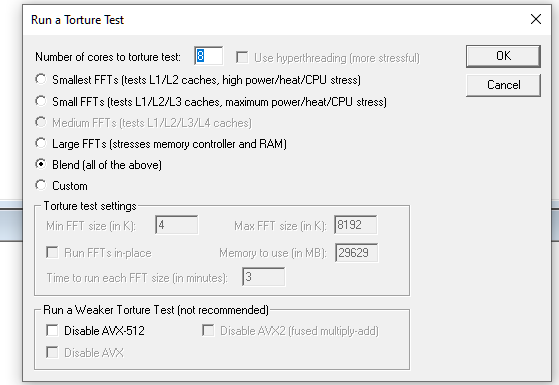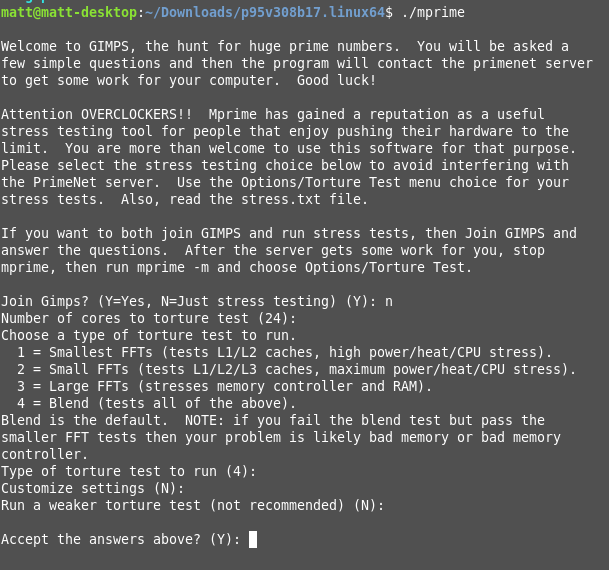Zarathustra[H]
Extremely [H]
- Joined
- Oct 29, 2000
- Messages
- 38,878
So,
I've been stability testing a new (to me) Rocket Lake Xeon E-2314 to make sure it is running properly, before I bring it online.
I'm using mprime (Prime95 for Linux) and I thought it was very weird that while its base clock is 2.8ghz and boost clocks are 4.5ghz, it was humming along at just 3.5Ghz.
Some troubleshooting later, I think I have figured out that this is due to AVX-512.
Since Version 29.8, Prime95 apparently supports AVX-512. and I suspect this is causing all of my cores to run at a lower clock than they otherwise would because of the higher power draw that AVX-512 results in, making them power limited.
I'm not here to discuss the merits of AVX-512 (or lack thereof) but what I am curious about is, will this still serve as a good stability test?
If Prime95 is now using AVX-512, and thus dropping my cores down by a full Ghz, are they still seeing a relatively worst case test, or are they just kind of coasting from being power limited?
If my real life use case doesn't really involve much AVX-512 use, would it be better to download an older version of Prime95 from the archives that predates AVX-512 for proper stress testing?
The general rule when it comes to testing, is tot est as closely to your actual worst case scenarios as possible. AVX-512 may result in worst case power draw, but it certainly doesn't result in worst case clocks.
This may not be a new topic of conversation, I just haven't had an AVX-512 compatible CPU before, so I never had to think about it.
Appreciate any thoughts anyone might have on this.
I've been stability testing a new (to me) Rocket Lake Xeon E-2314 to make sure it is running properly, before I bring it online.
I'm using mprime (Prime95 for Linux) and I thought it was very weird that while its base clock is 2.8ghz and boost clocks are 4.5ghz, it was humming along at just 3.5Ghz.
Some troubleshooting later, I think I have figured out that this is due to AVX-512.
Since Version 29.8, Prime95 apparently supports AVX-512. and I suspect this is causing all of my cores to run at a lower clock than they otherwise would because of the higher power draw that AVX-512 results in, making them power limited.
I'm not here to discuss the merits of AVX-512 (or lack thereof) but what I am curious about is, will this still serve as a good stability test?
If Prime95 is now using AVX-512, and thus dropping my cores down by a full Ghz, are they still seeing a relatively worst case test, or are they just kind of coasting from being power limited?
If my real life use case doesn't really involve much AVX-512 use, would it be better to download an older version of Prime95 from the archives that predates AVX-512 for proper stress testing?
The general rule when it comes to testing, is tot est as closely to your actual worst case scenarios as possible. AVX-512 may result in worst case power draw, but it certainly doesn't result in worst case clocks.
This may not be a new topic of conversation, I just haven't had an AVX-512 compatible CPU before, so I never had to think about it.
Appreciate any thoughts anyone might have on this.
Last edited:
![[H]ard|Forum](/styles/hardforum/xenforo/logo_dark.png)

